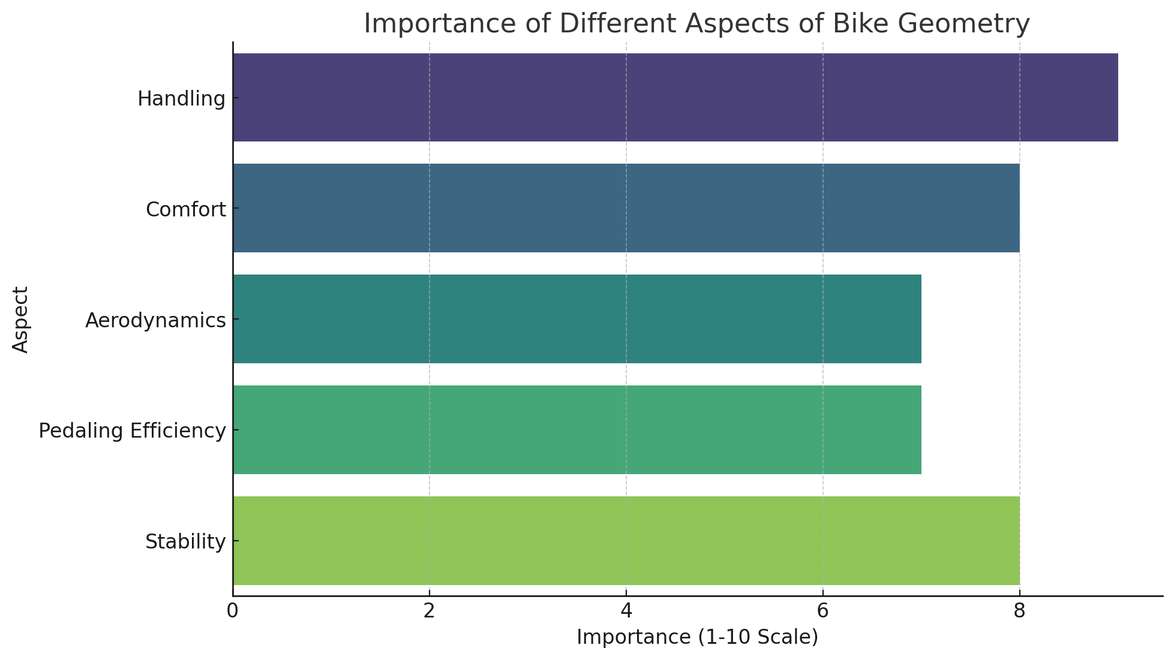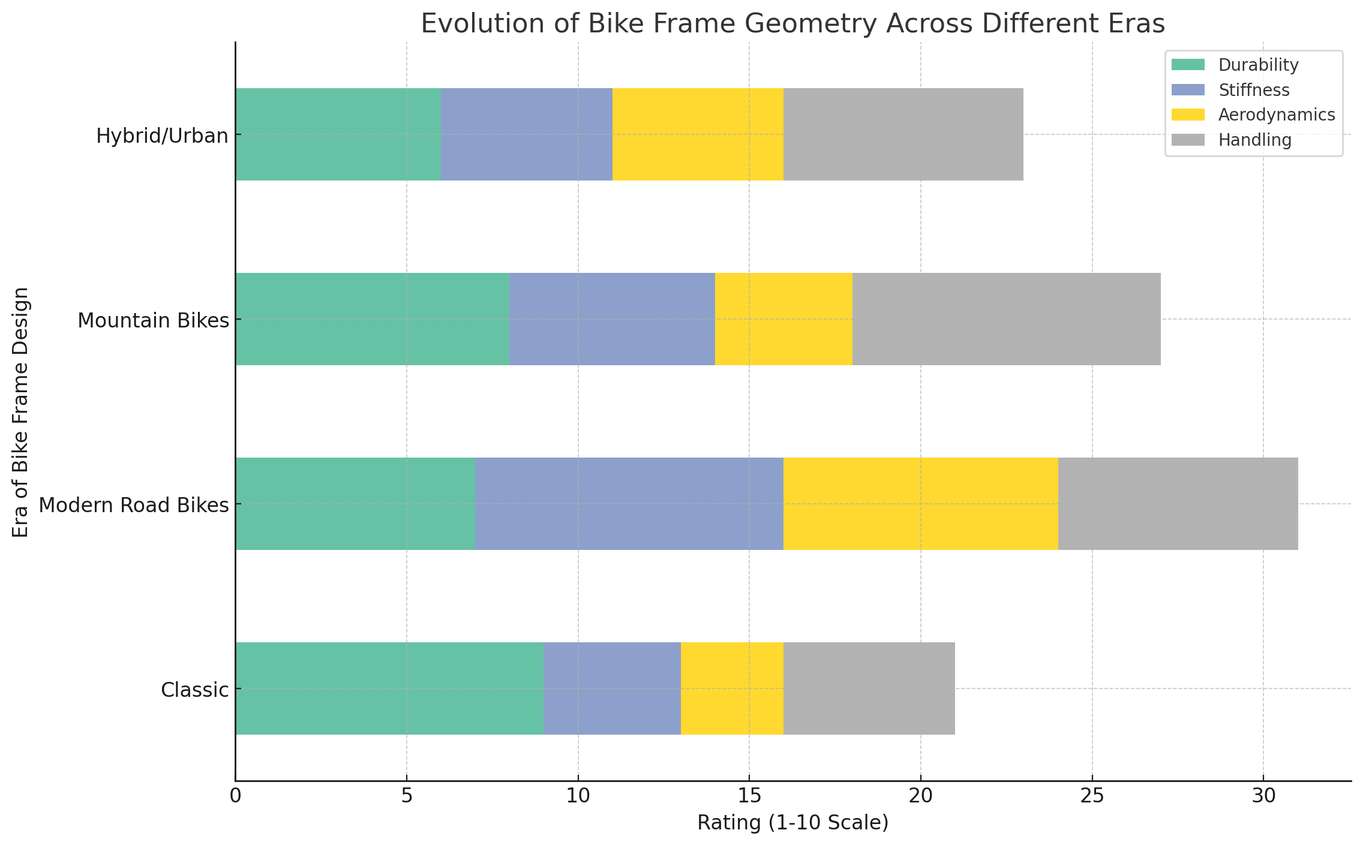
Understanding Bike Frame Geometry
Key Takeaways Table
| Key Point | Description |
|---|---|
| Bike Frame Geometry | Understanding how frame geometry affects bike handling, comfort, and performance. |
| Importance in Bike Fitting | Linking frame geometry to bike fitting principles for optimal riding experience. |
| Geometry for Different Riding Styles | Tailoring bike geometry to suit various cycling disciplines and rider preferences. |
| Technological Integration | Highlighting the role of technology in assessing and optimizing bike frame geometry. |
Understanding Bike Frame Geometry: A Key to Enhanced Cycling Performance
The Intricacies of Bike Geometry
Bike geometry, often perceived as a complex mix of measurements, charts, and diagrams, is fundamental in defining a bike's character. The geometry of a bike significantly influences how the bike handles and the rider's position, impacting both comfort and performance. This understanding is essential for anyone, from casual riders to professional cyclists, in choosing the right bike and achieving a comfortable and efficient ride.
The Influence of Frame Geometry on Riding Experience
Bike frame geometry goes beyond mere aesthetics. It plays a crucial role in how a bike handles, rides, and feels under varying conditions【29†source】. The design intricacies of the frame determine everything from handling, fit, comfort, aerodynamics, to pedaling efficiency【28†source】. For instance, racing bikes have a specific geometry that optimizes speed and handling, while touring bikes prioritize comfort over long distances.
Linking Frame Geometry with Bike Fitting
Bike fitting and frame geometry are inextricably linked. The right frame geometry, in conjunction with proper bike fitting principles, can drastically enhance your riding experience. Adjusting factors like saddle height and angle, handlebar positioning, and stem length are pivotal in achieving the perfect bike fit【12†source】【13†source】. For a deeper dive into these principles, explore our articles on adjusting saddle height, saddle angle setting, handlebar positioning guide, and stem length bike fit.
Customizing Geometry for Various Riding Styles
Different riding styles demand different frame geometries. Road bikes, mountain bikes, and touring bikes each have unique geometrical designs catering to their specific use cases. These differences in frame geometry affect the bike's stability, maneuverability, and rider comfort. The article on bike fit for different riding styles provides valuable insights into how geometry caters to diverse cycling disciplines.
The Role of Technology in Bike Geometry
In the era of technological advancements, tools like BikeFittr.com are revolutionizing bike fitting and geometry optimization. Utilizing advanced AI, BikeFittr.com analyzes your riding posture and delivers personalized recommendations for the perfect bike fit【15†source】【11†source】. This technology ensures that your bike is not just well-fitted but optimally suited for your unique riding style and body measurements.
Enhancing Bike Fit with Advanced Tools
The power of AI and sophisticated algorithms in BikeFittr.com transforms the way we understand and apply bike frame geometry. By leveraging such tools, cyclists can achieve a precise fit, significantly reducing issues related to improper bike assembly and fit【19†source】. This is particularly beneficial for riders seeking to balance comfort and performance, as discussed in our article on bike fit comfort vs performance.
Table: Geometry vs. Bike Fitting
| Geometry Aspect | Bike Fitting Consideration |
|---|---|
| Frame Size | Relates to measuring inseam for bike fit |
| Top Tube Length | Affects handlebar reach and handlebar positioning |
| Seat Tube Angle | Influences saddle angle setting and pedaling efficiency |
| Head Tube Angle | Determines steering responsiveness and stem length bike fit |

Geometry for Different Biking Disciplines
Each cycling discipline demands specific frame geometries to optimize performance and comfort. For instance, road cycling focuses on aerodynamics and speed, thus requiring a different frame design compared to mountain biking, which prioritizes maneuverability and shock absorption. Understanding these nuances is crucial for cyclists to choose the right bike for their preferred discipline. Our in-depth exploration of bike frame geometry basics provides a comprehensive look into this aspect.
Tailoring Geometry to Individual Needs
The concept of "one size fits all" does not apply in bike geometry. Factors like rider height, inseam length, and arm reach play a significant role in determining the ideal frame geometry. Customizing these aspects ensures a more comfortable and efficient ride, particularly for those who do not fit the standard mold. For insights into determining your bike size, refer to our article on the importance of bike size.
Impact of Flexibility and Physical Attributes on Bike Geometry
Rider flexibility and physical attributes also influence the ideal bike geometry. A more flexible rider may prefer a more aggressive, aerodynamic position, while those with less flexibility might need a more upright position for comfort. This highlights the importance of considering individual physical characteristics when selecting a bike. For further reading, see our discussion on rider flexibility and bike fit.
The Intersection of Comfort and Performance
Balancing comfort and performance is a key consideration in bike geometry. While a more aggressive geometry might lead to better performance, it could compromise comfort, especially on longer rides. Understanding your personal priorities and riding style is essential in finding this balance. Check out our insights on balancing bike fit comfort vs performance for more details.
List: Geometry Considerations for Different Riding Styles
- Road Cycling: Focus on aerodynamic position and efficient power transfer.
- Mountain Biking: Emphasize on maneuverability and shock absorption.
- Touring: Prioritize comfort and stability for long distances.
- Urban Cycling: Balance between comfort and agility for city rides.
Advancing Bike Geometry with AI Technology
The use of AI and machine learning in bike geometry is a game-changer. Tools like BikeFittr.com not only simplify the bike fitting process but also enhance the understanding and application of frame geometry. This technological leap allows for more precise and personalized bike fitting, catering to the unique needs of every rider【15†source】.
Personalization at Your Fingertips
With the integration of AI, cyclists can now enjoy a highly personalized bike fitting experience. The AI algorithms analyze individual riding styles, physical measurements, and preferences to recommend the most suitable frame geometry. This level of customization was previously only available through professional bike fitters.
The Evolution of Bike Geometry
Bike frame geometry has evolved significantly over the years, adapting to the changing needs and technologies in cycling. From the classic diamond frame to more modern designs, each evolution reflects advancements in materials, rider needs, and cycling disciplines. This evolution underscores the importance of staying updated with the latest trends in bike geometry for the best cycling experience.

Historical Perspective and Modern Trends
The historical progression of bike frame design offers insights into how and why certain geometries became popular. For example, the shift towards more compact frames in road bikes was driven by the need for greater stiffness and responsiveness. Understanding these trends is not just about the past; it’s about foreseeing future developments in bike design.
Table: Evolution of Bike Frame Geometry
| Era | Characteristics |
|---|---|
| Classic | Traditional diamond frame, prioritizing durability |
| Modern Road Bikes | Compact frames, emphasizing stiffness and aerodynamics |
| Mountain Bikes | Focus on robustness and handling in rough terrain |
| Hybrid/Urban | Blend of comfort and efficiency for diverse environments |
The Science Behind Geometry and Performance
Delving deeper into the science of bike frame geometry reveals its direct impact on a cyclist's performance. Factors like the angle of the head tube and the length of the top tube can significantly affect speed, stability, and comfort. These scientific principles are crucial for riders who are keen on maximizing their cycling potential.
Quantifying the Effects of Geometry on Cycling
By understanding the metrics and calculations behind bike geometry, cyclists can make more informed decisions about their bike choice and setup. This is where tools like BikeFittr.com become invaluable, as they provide a scientific basis for bike fitting and geometry optimization.
List: Scientific Aspects of Bike Geometry
- Head Tube Angle: Influences steering and stability.
- Top Tube Length: Affects reach and riding posture.
- Seat Tube Angle: Determines leg extension and pedaling efficiency.
- Chainstay Length: Impacts bike handling and acceleration.
Future Directions in Bike Geometry
As cycling technology continues to advance, we can expect further innovations in bike frame geometry. The integration of new materials, data analytics, and rider feedback will likely lead to even more personalized and efficient bike designs. Staying abreast of these developments is crucial for anyone involved in the cycling industry or passionate about biking.
Anticipating the Next Wave of Innovations
The future of bike geometry is likely to be shaped by ongoing technological advancements and a deeper understanding of human biomechanics. This could lead to even more specialized bikes, catering to specific rider needs and environmental conditions.
Conclusion
Understanding bike frame geometry is a critical aspect of achieving the ideal bike fit. By linking geometry with bike fitting principles and leveraging technological advancements like BikeFittr.com, riders can enjoy an optimized cycling experience. Whether it's about enhancing comfort, improving performance, or ensuring safety, the knowledge of frame geometry and its application in bike fitting is invaluable for every cyclist.